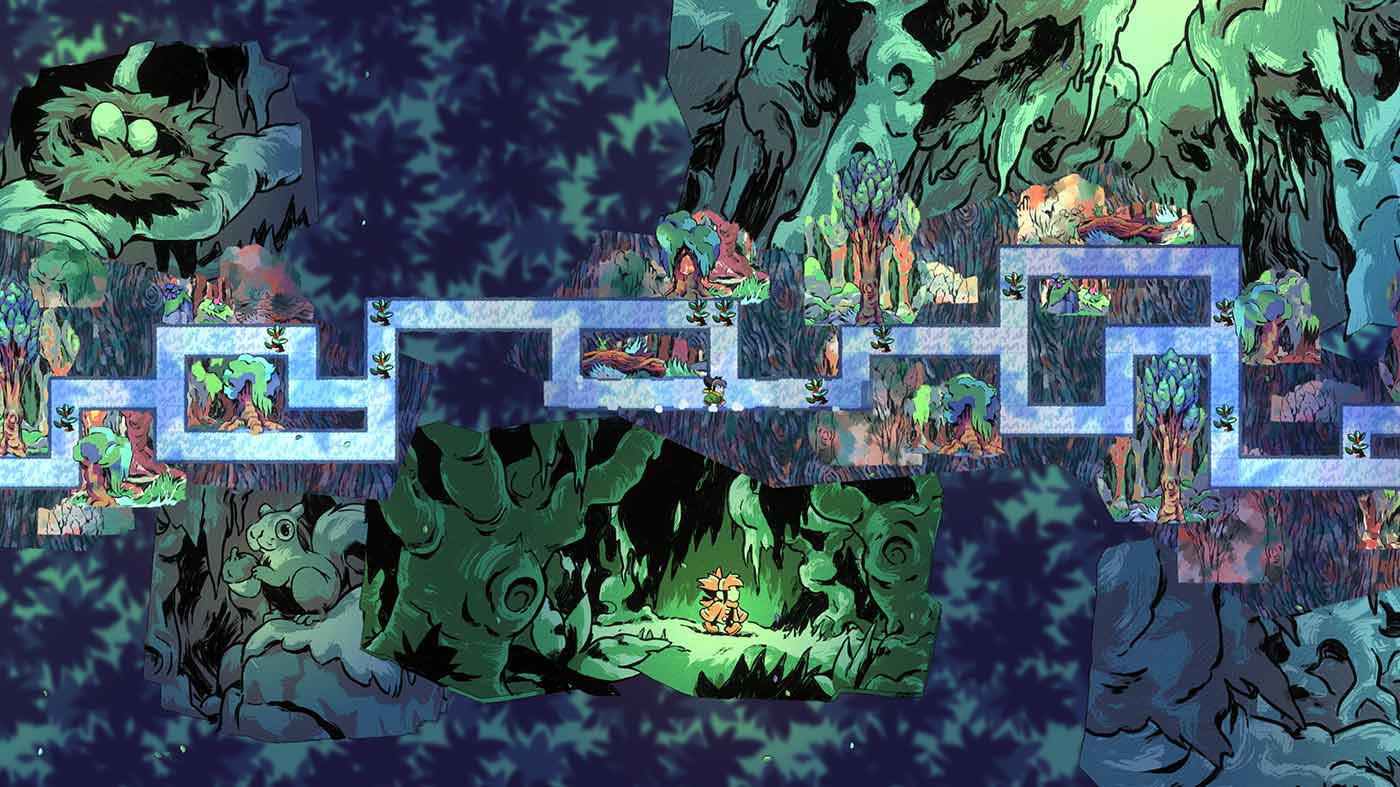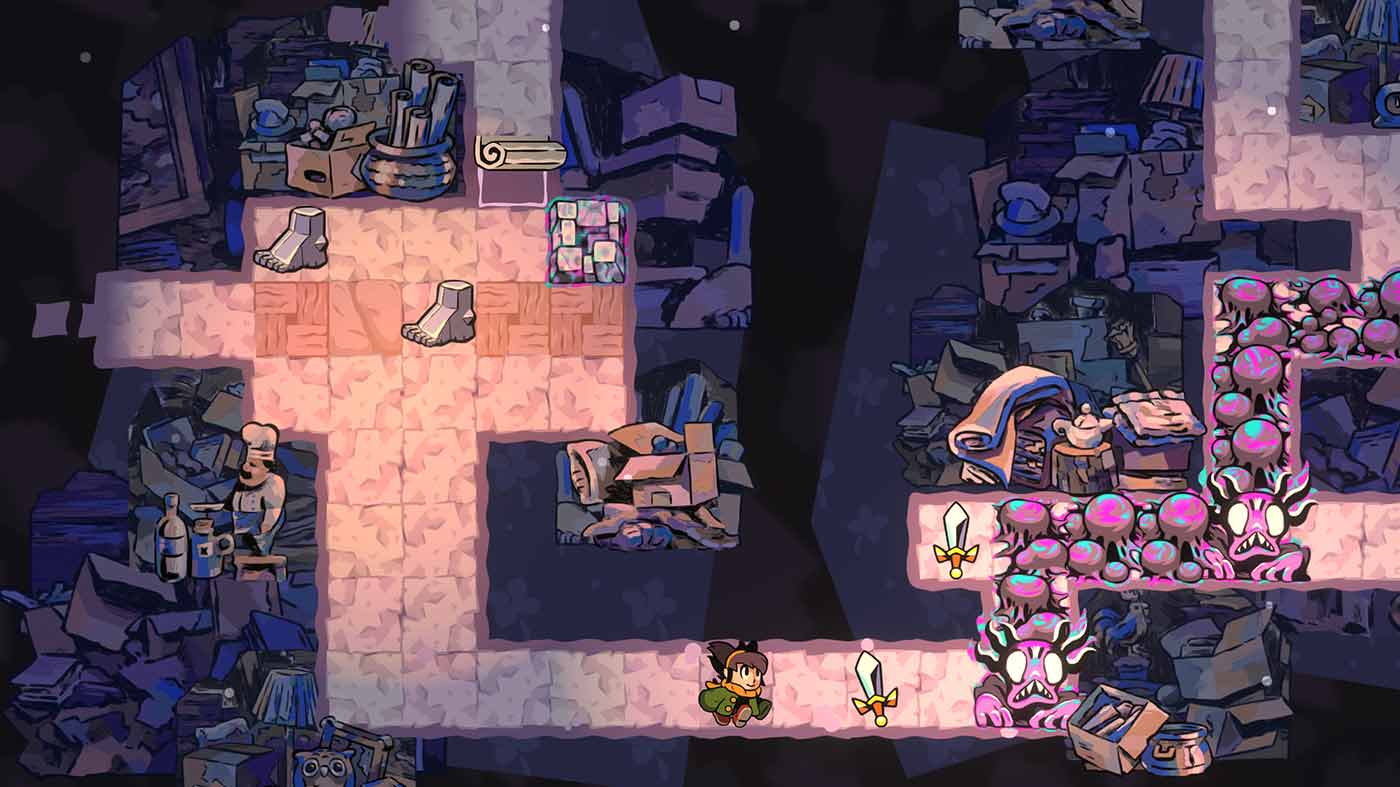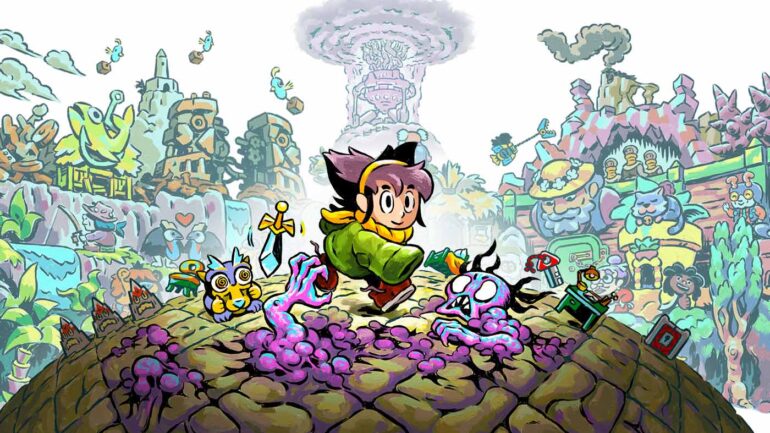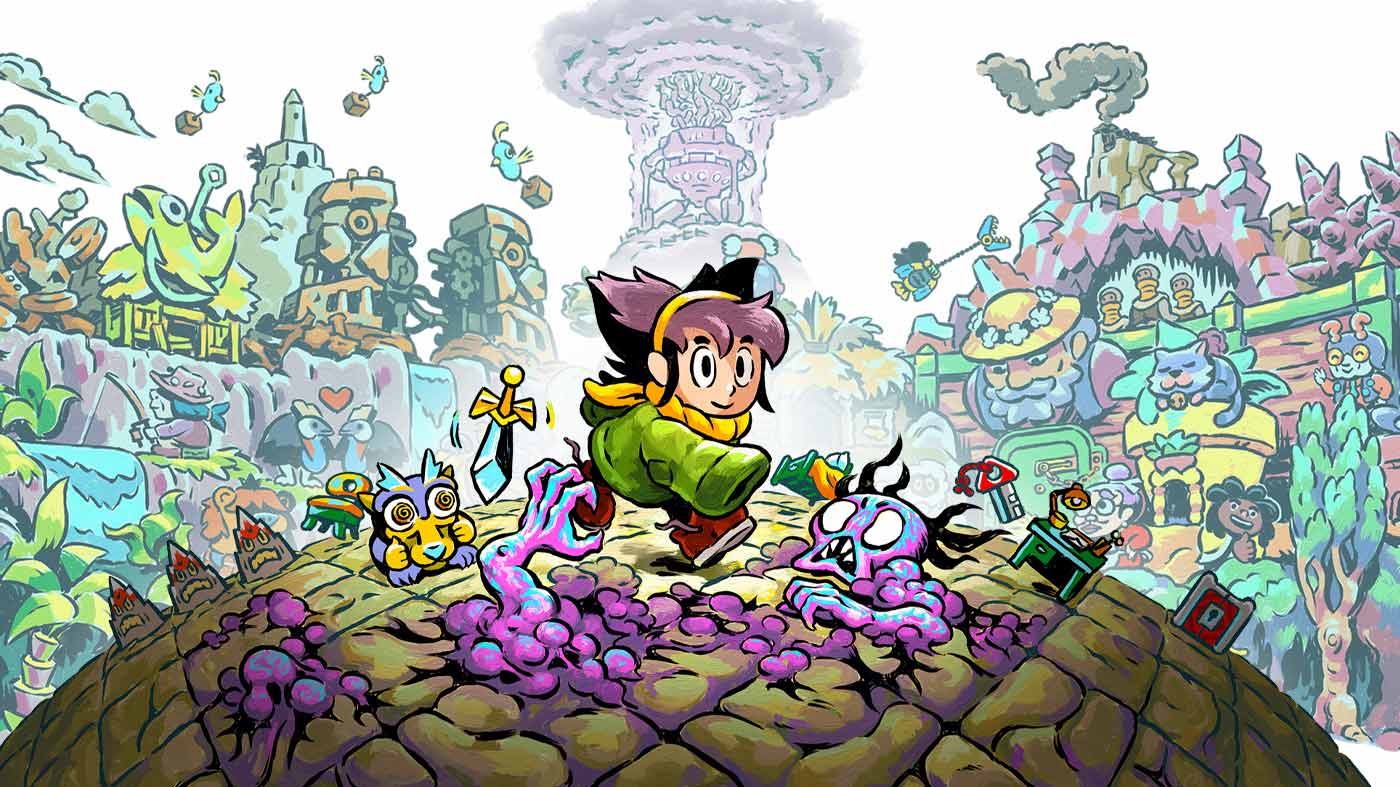I’ve played a lot of games in my life where my feelings could be summed up with “this is a good idea, but the execution is lacking.” Games that, on paper, sound great, but which can’t quite realise their ambitions. Arranger: A Role-Puzzling Adventure, the first game by indie developer Furniture & Mattress, is kind of the exact opposite. The notion of a game that’s based entirely around sliding tiles initially repelled me – sliding block puzzles are always my least-favourite variety in any games they appear in. Whether it’s pushing boxes around a limited space or one of those especially bad ones where you need to slide tiles around to form a picture, these sorts of puzzles often bring games to a grinding halt. When I got a Rubik’s Cube as a kid, I did the same thing most kids do – I picked the stickers off and re-attached them so that it was “solved.”
But actually, Arranger executes on its central premise, a game where the entire world is a sliding tile puzzle, extremely well. It’s a bit of a flex, building a whole game out of the worst part of several other games but making it quite good, and that’s exactly what this team has done with their debut.

You play as Jemma, the only person in the little village she grew up in who can “arrange” a room just by moving through it. Every area in the game is represented as a series of tiles on a grid, and if you move up, down, left or right, you’ll bring all the tiles in that column or row with you, including any items or other characters sitting on them. Rows loop infinitely, so if Jemma pushes off-screen to the left, she’ll reappear on the right, just like Pac-Man. Your movements through an area are inherently disruptive, and the game is built around solving puzzle rooms to progress.
Arranger, then, is a whole game about sliding block puzzles, figuring out how to move around obstacles and maneuver through situations. The developers have wrung this mechanic for all that it’s worth, finding new ways to invigorate Jemma’s journey across the game. In some rooms, you might need to slide swords into monsters to clear a path forward, or figure out an optimum path to make it through in the fewest moves possible, or handle one of the game’s many contraptions, figuring out how to manipulate them with tile sliding.

You might get an object to cover a button to open a path – although, of course, if you move along the same track, the object will slide right back off the button. Or you might need to line up multiple swords against several monsters at once, only to realise, once you’ve done it, that your next move will inevitably misalign it. Or you might figure out a perfect path through a level, only to remember that an immovable rock is covering the opposite wall of the row you’re on, meaning that you can’t loop through it, and need to reset everything. In fact, throughout the whole game I found the central premise of how Jemma moves often slipping from my mind, leading to many moments of frustration where my seemingly perfect plans wouldn’t work, or where the solution to move forward was extremely fiddly.
There were moments in Arranger where the mechanics clicked well for me, and I found sliding around and figuring out the best way forward enjoyable. In fact, I was having a good time with the game far more often than not. There were a few instances, though, where the inherent frustration of sliding the whole environment around with me did not seem worth the satisfaction of completing the puzzles. I never quite resorted to the (very welcome) option in the menu that would have allowed me to skip puzzles, but there were certainly moments where I got irritated enough at the fundamental nature of the game that I had to put my controller down and walk away for a bit.

But Arranger’s puzzles won me over, more or less. The controls have a pleasant snappiness to them, and even though there were a few puzzles I ended up brute forcing – sliding every which way until I stumbled into the right solution, sometimes not fully comprehending how I did it – most of the time I was able to reason my way through the game. It was always interesting entering into a new “dungeon” area (basically a bunch of puzzle rooms stuck together) and seeing what new mechanic the game would cook up this time. Some are more compelling than others, for sure, but it’s still exciting to see the concept squeezed so hard. There are even boss battles, which more-or-less work! There is a part of me that suspects that there are people out there whose brains work differently, and who won’t have as many moments of frustration as I did. If you have an affinity for sliding block puzzles, you’re in for a treat.
There’s a heartening plot through running through Arranger. Jemma, the odd-one-out in a village full of people who move in a more regular fashion, leaves her hometown at the game’s opening to see more of the world and learn more about herself. You get to meet a cast of colourful characters along the way who ultimately help you in your emerging quest, although I found the overarching plot a little too unfocused to serve as a major draw (you’re trying to clear the world of the “Static”, a threat that never really feels like much of a threat). There’s some resonance, when the game is at its most annoying, to the idea that this is something that Jemma can’t turn off, although the game doesn’t necessarily capitalise on this connection as much as it could.

More exciting are the gorgeous art and soundtrack. Arranger’s artist previously worked on Braid, and the style here is similar. While there’s some limitations on what the game can do with its grid-based levels, the painted backgrounds are frequently gorgeous, revealing extra details of the world through comic panels and neat artistic details. Exploring the world of Arranger meant getting to see lots of lovely new art, which was always a treat.
I played the game on Switch, and it’s worth noting that it has some of the best HD rumble I’ve experienced on the system in some time. It’s a feature that has gone a little underused in many recent titles, but the harsh buzz you feel when you try to make an impossible move is a suitably evocative metaphor for the frustration you might feel as Jemma literally bangs her head against a wall. On top of the aforementioned option to skip puzzles, Arranger also features a few other fun modifiers – a touchscreen mode, a “buddy” mode where another player can float across the screen as a fairy, pointing details out (or annoying the main player), and a hard mode, which reverses controls and turns your movement speed way up. There are even on-screen step counters and timers for speedrunners and challenge-seekers.

Arranger is, I think, just about the best-case scenario for this kind of game, built as it is on a mechanic that is unavoidably frustrating. It’s more enjoyable than it is annoying, and the reward for persevering during its worst moments is usually more smart puzzles and good vibes. I might not be sold on sliding block puzzles as a good idea for most games, but Arranger proves, at least, that there’s more scope to do interesting things with them than I realised.




